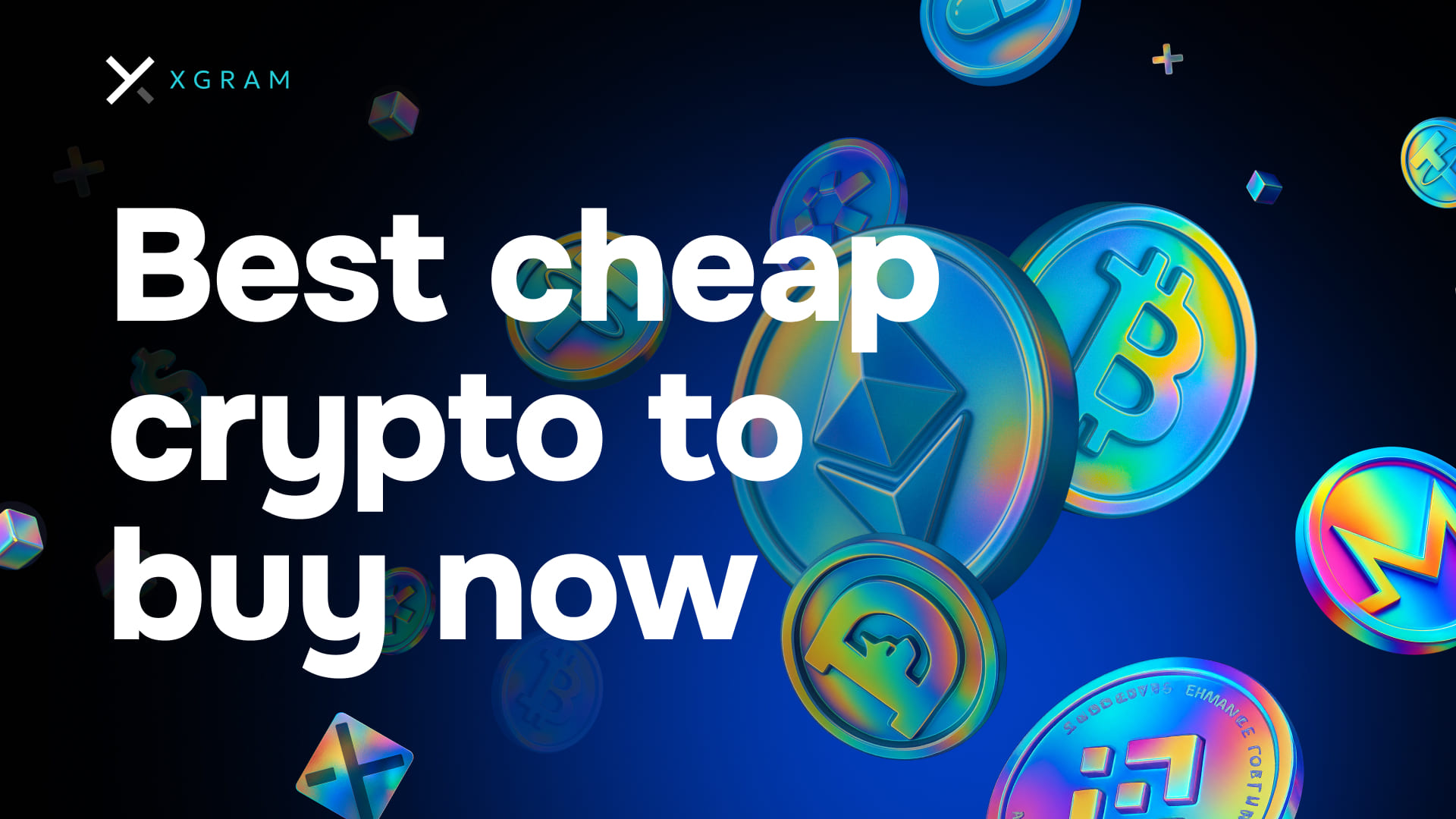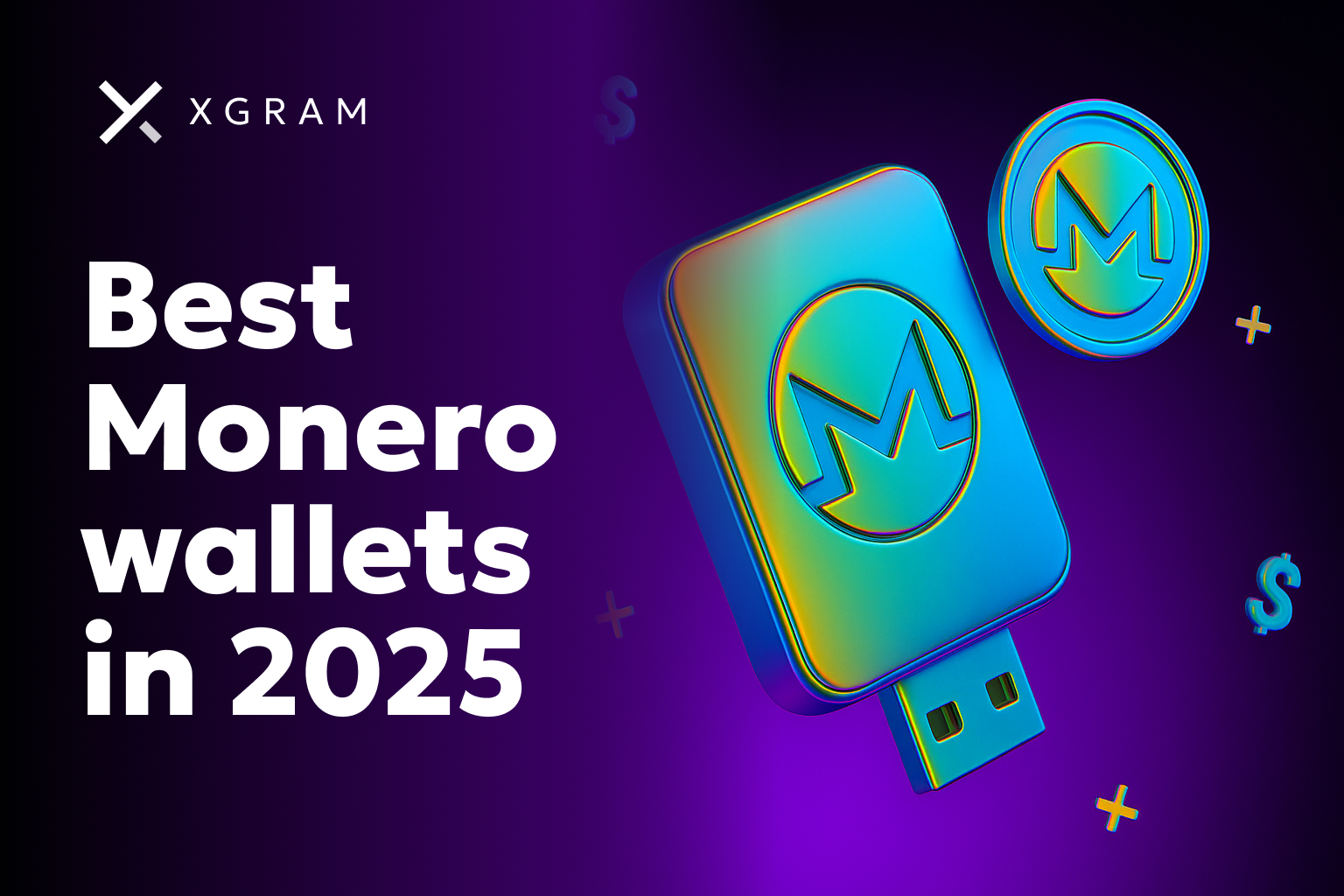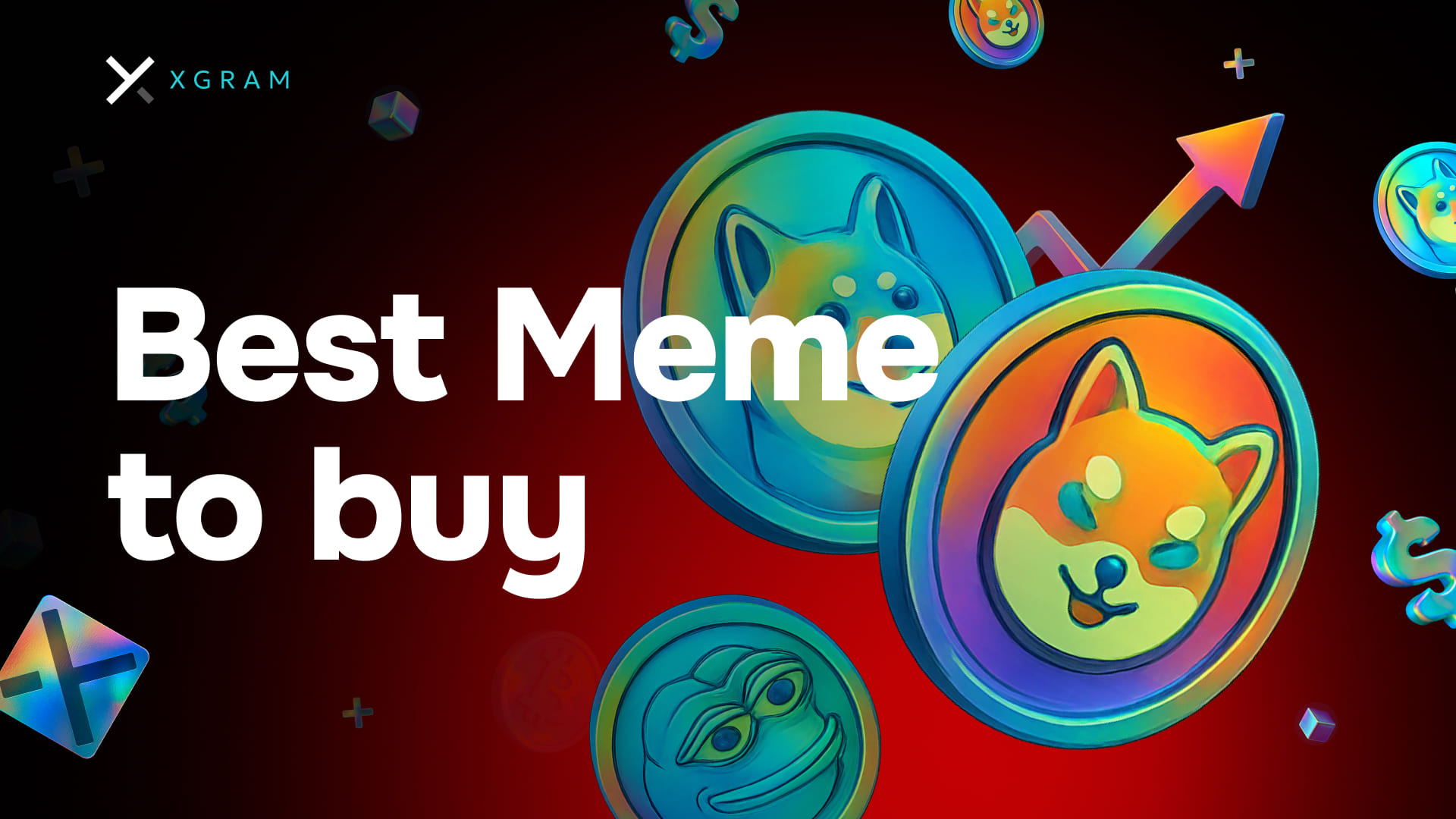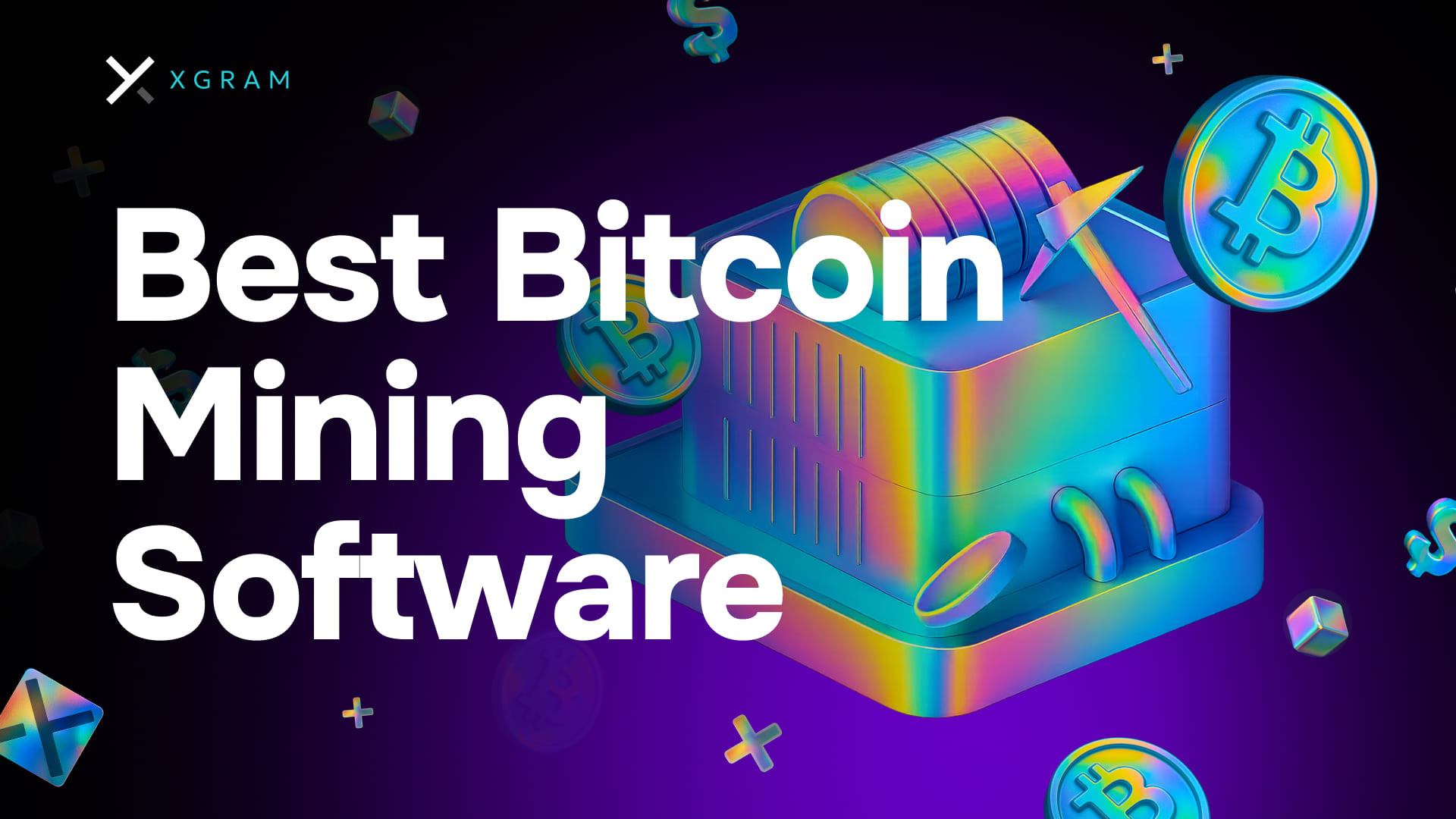Want to dive into crypto without spending thousands on a single Bitcoin? Good news: you don't have to. The market is packed with affordable cryptocurrencies trading under $1, many with genuine utility and growth potential. These low-price coins let you build a diversified portfolio even with a modest budget.
As of October 2025, the crypto market is showing renewed momentum. Bitcoin recently pushed past $110,000, and that bullish energy often trickles down to altcoins, especially those with low entry prices that appeal to retail investors. But here's the thing: cheap doesn't automatically mean good value. Some coins trade for fractions of a cent because they're genuinely undervalued, while others are just... cheap.
So how do you separate the promising projects from the noise? Let's explore the best cheap crypto to buy now, breaking down what makes each one worth considering for your portfolio in 2025.
1. Shiba Inu (SHIB): The Meme Coin With an Ecosystem

Price: ~$0.000012 (October 2025)
Shiba Inu burst onto the scene in 2020 as a Dogecoin alternative, but it's evolved far beyond its meme origins. Trading at just over one cent per thousand tokens, SHIB remains one of the most affordable cryptocurrencies with mainstream recognition.
What sets SHIB apart from other meme coins is Shibarium, its layer-2 blockchain solution. Launched to enhance scalability and reduce transaction costs, Shibarium has seen significant activity in 2025, with millions of transactions processed. The ecosystem also includes ShibaSwap (a decentralized exchange), NFT projects, and ongoing token burns that reduce the circulating supply.
As of October 2025, SHIB trades around $0.0000116, down from its 2021 all-time high of $0.000088. The token faces resistance at $0.00001360 and needs to reclaim the $0.00001264-$0.00001286 range to regain bullish momentum. With over 1.3 million holders and continuous development, SHIB remains a top choice for those seeking cheap crypto with an active community.
Pros:
- Massive community (the "ShibArmy") with millions of holders
- Real ecosystem with Shibarium, ShibaSwap, and ongoing burns
- Listed on major exchanges like Binance, Coinbase, and Kraken
Cons:
- Extremely high volatility typical of meme coins
- Still heavily dependent on social media hype
- Faces stiff competition from newer meme tokens
2. Floki (FLOKI): Gaming Meets Meme Culture

Price: ~$0.000085 (October 2025)
Named after Elon Musk's Shiba Inu dog, Floki has carved out a unique niche by combining meme appeal with gaming utility. Currently trading at $0.000085, FLOKI is developing Valhalla, an NFT gaming metaverse, alongside FlokiFi (DeFi products) and University of Floki (educational content).
What makes Floki interesting is its auto-burn mechanism powered by its trading bot. The bot has generated over $1 million in fees, with 50% automatically used to buy back and burn FLOKI tokens. This deflationary pressure differs from Dogecoin's inflationary model and adds a layer of tokenomics strategy beyond pure speculation.
Recent partnerships in sports and entertainment have boosted FLOKI's visibility. The token is up over 3% in recent weeks, with trading volume exceeding $308 million. The Floki Kings World Cup Partnership 2025 aims to connect with football fans globally, merging sports, entertainment, and crypto.
Pros:
- Multiple utility products (Valhalla game, FlokiFi, marketplace)
- Auto-burn mechanism creates deflationary pressure
- Strong social media presence with 400,000+ holders
Cons:
- Gaming metaverse still in development
- Down 72% from all-time high of $0.000320 (June 2024)
- High competition in the gaming crypto space
3. Pepe (PEPE): The Frog That Leaped Into Crypto

Price: ~$0.00002 (October 2025)
Inspired by the "Pepe the Frog" internet meme, PEPE exploded onto the scene in 2023 with a 7,000% surge shortly after launch. As of October 2025, PEPE trades around $0.00002, making it one of the most affordable meme coins with significant market presence.
Unlike older meme coins, PEPE has no pretense of utility, embracing its role as pure speculation and community-driven hype. However, this hasn't stopped it from building a loyal following. The token was recently added to Indonesia's approved cryptocurrency list, joining DOGE, SHIB, and FLOKI as legally tradable digital assets.
PEPE's price recently jumped 18% in 24 hours to $0.00002113, with trading volume soaring 178% to $3.79 million. The surge came ahead of major exchange listings, which typically provide liquidity boosts. Some analysts predict PEPE could reach new all-time highs by early 2025 if current momentum continues.
Pros:
- Strong meme culture appeal and viral potential
- Listed on major exchanges (Binance, Coinbase, OKX)
- Recent regulatory approval in Indonesia boosts legitimacy
Cons:
- No utility beyond speculation
- Market cap still small compared to DOGE and SHIB
- Extreme price volatility
4. VeChain (VET): Enterprise Blockchain for Supply Chains

Price: ~$0.023 (October 2025)
VeChain stands out among cheap cryptocurrencies because it actually solves real-world problems. Trading at $0.023, VET powers a blockchain focused on supply chain management and anti-counterfeiting solutions.
Companies use VeChain to track products from manufacturing to consumer delivery. Major partnerships include Walmart China (for food safety tracking), BMW (for supply chain transparency), and DNV (a global quality assurance provider). Unlike meme coins, VeChain's value proposition is tangible: businesses pay to use the network, creating real demand for VET tokens.
As of October 2025, VET is testing resistance at its 20-week moving average. Technical analysts suggest a breakout above this level could trigger rallies exceeding 200%, making VET a candidate for explosive upside. The project continues adding enterprise clients, with a focus on sustainability and carbon tracking gaining traction.
Pros:
- Real enterprise adoption with major companies
- Solves actual business problems (supply chain transparency)
- Strong partnerships in automotive, luxury goods, and logistics
Cons:
- Price action has been relatively flat compared to meme coins
- Enterprise adoption moves slowly
- Faces competition from other supply chain blockchains
5. Kaspa (KAS): The Speed Demon Blockchain

Price: ~$0.076 (October 2025)
Kaspa is a layer-1 blockchain modeled on Bitcoin but offering faster transactions through its innovative blockDAG architecture. Trading at approximately $0.076, KAS has delivered some of the highest returns among affordable cryptocurrencies between 2024 and 2025.
What makes Kaspa unique is its approach to scalability. While Bitcoin processes about 7 transactions per second, Kaspa's blockDAG design aims for near-instant confirmation times without sacrificing decentralization. The network uses proof-of-work (like Bitcoin) but structures blocks differently, allowing multiple blocks to be confirmed simultaneously.
Recent developments include the Casplex Layer 2 smart contract platform and new exchange listings on SwissBorg and other platforms. KAS currently trades in the $0.16-$0.18 range, with analysts eyeing $0.25-$0.30 as the next resistance levels. Long-term projections suggest KAS could reach $0.125 average by end of 2025, though volatility remains high.
Pros:
- Innovative blockDAG technology offers Bitcoin-like security with faster speeds
- Growing developer interest and active community
- Deflationary tokenomics similar to Bitcoin
Cons:
- Still relatively new and unproven at scale
- Down from 2024 all-time high
- Competition from established layer-1s like Ethereum and Solana
6. Dogecoin (DOGE): The Original Meme King

Price: ~$0.20 (October 2025)
Dogecoin needs no introduction. Created as a joke in 2013, DOGE has become a cultural phenomenon and one of the most recognized cryptocurrencies globally. Trading around $0.20 in October 2025, Dogecoin remains accessible while carrying significantly more mainstream adoption than newer meme coins.
What keeps DOGE relevant is its simplicity and community. The token has no complex DeFi features or gaming metaverses, just a straightforward payment coin with fast, cheap transactions. Elon Musk's continued support (Tesla accepts DOGE for merchandise) and payment integrations with platforms like PayPal and Revolut give it real-world utility.
Grayscale recently filed for the first-ever Dogecoin ETF, with approval expected by late October 2025. This institutional interest could bring significant capital inflows. ChatGPT AI predictions suggest DOGE could reach $0.40-$1.00 by year-end if the bull market continues, though this remains speculative.
Pros:
- Highest brand recognition among meme coins
- Real payment adoption (Tesla, PayPal, Revolut)
- Potential ETF approval could drive institutional buying
Cons:
- Inflationary supply (5 billion new DOGE mined annually)
- Lacks smart contract functionality
- Price heavily influenced by Elon Musk's tweets
7. Arbitrum (ARB): Ethereum's Scaling Solution

Price: ~$0.52 (October 2025)
Arbitrum is Ethereum's largest layer-2 scaling solution by total value locked (TVL), processing transactions faster and cheaper than the Ethereum mainnet. Trading at approximately $0.52, ARB tokens give holders governance rights over the network's development.
Layer-2 solutions like Arbitrum address Ethereum's congestion problems by processing transactions off the main chain and then bundling them for final settlement. This dramatically reduces gas fees while maintaining Ethereum's security. As of October 2025, Arbitrum has over $2.5 billion in TVL across its chains, with consistent developer activity.
The Arbitrum DAO recently passed governance proposals to further decentralize operations and incentivize dApp expansion. Despite trading 80% below its 2024 highs, ARB's fundamentals remain strong. Analysts project $1-$3 by late 2025 and potentially higher by 2030 as Ethereum scaling demand grows.
Pros:
- Essential infrastructure for Ethereum ecosystem
- High TVL and active developer community
- Ongoing governance improvements and ecosystem growth
Cons:
- Token price has underperformed compared to meme coins
- Faces competition from other layer-2s (Optimism, Base, zkSync)
- Value tied to Ethereum's success
8. Cardano (ADA): The Academic Blockchain

Price: ~$0.79 (October 2025)
Cardano takes a research-driven approach to blockchain development, with every upgrade peer-reviewed by academics. Trading at $0.79 in October 2025, ADA has surged 163% over the past year, outpacing Bitcoin and Ethereum in intrayear growth among top-10 projects.
Founded by Ethereum co-founder Charles Hoskinson, Cardano uses a proof-of-stake consensus mechanism that's far more energy-efficient than Bitcoin's proof-of-work. The network handles approximately 0.42 transactions per second while prioritizing security and scientific rigor in its development process.
Recent developments include proposals to convert $100 million in ADA into USDM stablecoin to inject liquidity into Cardano's DeFi ecosystem. Franklin Templeton and other institutional players are taking interest, and the network continues expanding partnerships in Africa and Latin America. ADA staking was recently introduced to Bitstamp, expanding U.S. market access.
Pros:
- Rigorous, peer-reviewed development process
- Highly energy-efficient proof-of-stake
- Growing DeFi ecosystem and institutional interest
Cons:
- Slower development pace due to academic approach
- Lower transaction throughput than competitors
- Needs to break above $0.95-$1.00 resistance
9. Ondo (ONDO): Bridging Traditional Finance and Crypto
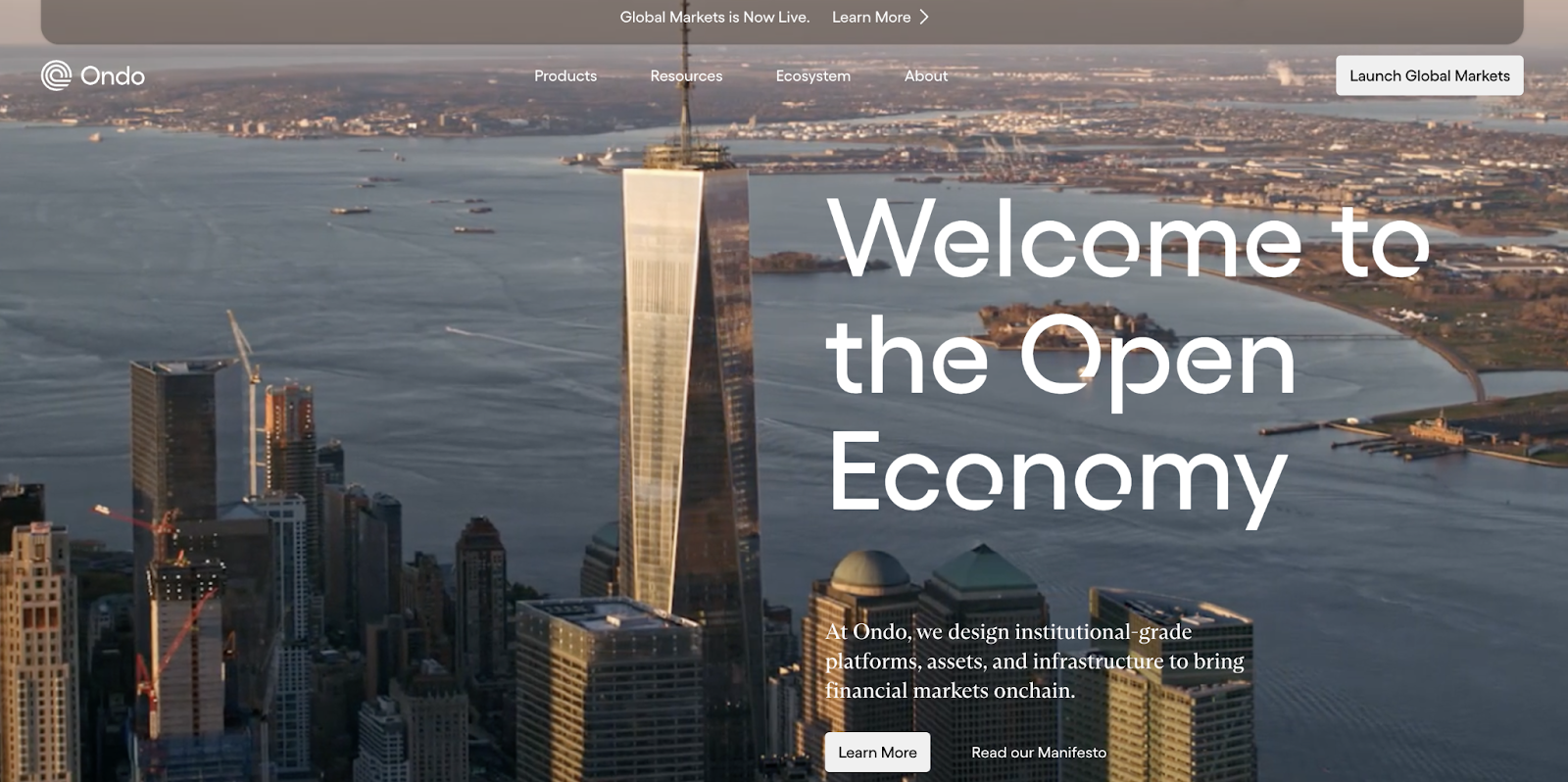
Price: ~$0.94 (October 2025)
Ondo Finance stands out by tokenizing real-world assets (RWAs) like U.S. Treasury bills and bonds on the blockchain. Trading just under $1 at $0.94, ONDO gives investors exposure to the growing RWA sector without requiring thousands of dollars.
The platform has successfully onboarded over $500 million worth of tokenized assets, with more than $200 million in inflows earlier in 2025. This makes Ondo one of the largest RWA-focused platforms in the crypto space. The project uses a mint-and-redeem algorithm similar to commodity-backed stablecoins, allowing users to tokenize tangible financial assets.
What makes ONDO interesting is its bridge between traditional finance (TradFi) and decentralized finance (DeFi). Investors can gain exposure to stable, yield-generating assets like Treasury bills while enjoying blockchain's transparency and accessibility. Speculation about partnerships with major banks continues to drive interest.
Pros:
- Real utility in the growing $250B+ RWA tokenization market
- Backed by institutional-grade assets (Treasury bills, bonds)
- Strong product-market fit as DeFi matures
Cons:
- Regulatory uncertainty around tokenized securities
- Requires understanding of both crypto and traditional finance
- Lower upside potential compared to speculative meme coins
How to Buy These Cheap Cryptos Safely
Finding affordable cryptocurrencies is one thing; buying them securely is another. Here's a practical approach:
Choose Your Platform Wisely
Major exchanges like Binance, Coinbase, and Kraken list most of the tokens mentioned above. For U.S. investors, platforms like Robinhood offer a simple interface for buying popular cryptos like DOGE, ADA, and SHIB without complicated wallet setups.
If you're looking to swap between cryptocurrencies without lengthy registration processes, consider using Xgram. Xgram lets you exchange crypto anonymously without KYC verification, which is useful for quick swaps between different coins. The platform supports over 1,000 trading pairs with competitive rates and provides a personal manager for exchanges exceeding $20,000.
Storage Matters
Don't leave large amounts on exchanges. Use hardware wallets (Ledger, Trezor) or reputable software wallets (MetaMask, Trust Wallet) for long-term storage. Remember: not your keys, not your crypto.
Dollar-Cost Averaging
Instead of investing a lump sum, consider buying small amounts regularly. This strategy reduces the impact of volatility and helps you avoid buying at peaks. Even $10-$20 weekly into cheap crypto can build a substantial position over months.
Comparison Table: Best Cheap Crypto at a Glance
| Cryptocurrency | Price (Oct 2025) | Market Cap Rank | Primary Use Case | Best For |
|---|---|---|---|---|
| SHIB | $0.000012 | Top 15 | Meme coin + Shibarium L2 | Meme coin exposure with ecosystem |
| FLOKI | $0.000085 | ~90 | Gaming metaverse + DeFi | Play-to-earn gaming enthusiasts |
| PEPE | $0.00002 | ~25 | Pure meme speculation | High-risk traders |
| VET | $0.023 | ~45 | Supply chain management | Enterprise blockchain believers |
| KAS | $0.076 | ~50 | Fast layer-1 blockchain | Tech-focused investors |
| DOGE | $0.20 | Top 10 | Payment/meme hybrid | Crypto beginners |
| ARB | $0.52 | ~45 | Ethereum layer-2 scaling | Ethereum ecosystem bulls |
| ADA | $0.79 | Top 10 | Smart contracts platform | Long-term, research-oriented investors |
| ONDO | $0.94 | ~90 | Tokenized real-world assets | TradFi/DeFi bridge seekers |
How to Choose the Right Cheap Crypto for You
Not all affordable cryptocurrencies are created equal. Here's what to evaluate:
Check the Project's Fundamentals
Does the cryptocurrency solve a real problem? VeChain's supply chain solutions and Ondo's RWA tokenization have clear value propositions. Meme coins like PEPE and SHIB rely more on community and hype, which can be profitable but riskier.
Assess Community Strength
Active communities on Twitter/X, Reddit, and Discord signal sustained interest. Look for projects with developers regularly shipping updates, not just marketing hype. Cardano's academic community and Arbitrum's developer ecosystem are examples of healthy, engaged communities.
Understand Tokenomics
How many tokens exist? Is the supply inflationary (like DOGE) or deflationary (like FLOKI with burns)? Lower circulating supply doesn't automatically mean higher prices, but it's worth understanding. Check sites like CoinMarketCap or CoinGecko for detailed token metrics.
Consider Your Risk Tolerance
Be honest about your investment goals. Can you afford to lose this money? Meme coins like PEPE and SHIB offer high upside but extreme volatility. Projects like ARB and ADA move more slowly but have stronger fundamentals. Diversify across different types of cheap crypto to balance risk.
Quick Checklist:
- Read the project's whitepaper (if it has one)
- Check team credentials and transparency
- Verify listings on reputable exchanges
- Review recent price action and trading volume
- Join community channels to gauge sentiment
- Never invest more than you can afford to lose
The Risks of Buying Cheap Crypto
Let's be real: cheap cryptocurrencies carry substantial risks. Understanding these dangers is crucial before investing a single dollar.
Extreme Volatility
Low-price coins can swing 20-50% in a single day. PEPE's 18% jump in 24 hours is exciting on the upside but terrifying when it drops. This volatility can wipe out your investment faster than established cryptos like Bitcoin.
Liquidity Concerns
Some cheap cryptos trade with low volume, making it hard to sell quickly without impacting the price. Always check 24-hour trading volume before buying. Coins with under $1 million daily volume are risky.
Rug Pulls and Scams
The cheap crypto space attracts scammers. Anonymous teams, missing whitepapers, and promises of guaranteed returns are red flags. Stick to projects listed on major exchanges and with transparent teams.
Market Manipulation
Low market cap coins are easier for "whales" (large holders) to manipulate. Coordinated pump-and-dump schemes are common. This is why community research and due diligence matter.
Regulatory Risk
Governments worldwide are tightening crypto regulations. Some projects, especially those operating in gray areas, could face legal challenges. Meme coins particularly lack regulatory clarity.
FAQ
What makes a cryptocurrency "cheap"?
A cheap cryptocurrency typically trades for less than $1 per token. However, price alone doesn't indicate value. A coin priced at $0.01 with 100 billion in circulation has a higher market cap than a $10 coin with 1 million supply. Always consider market cap alongside price.
Can cheap crypto make you rich?
Cheap crypto can deliver substantial returns if you pick the right projects early. Dogecoin investors who bought at $0.002 in 2020 saw 36,000% gains by 2021. However, most cheap cryptos fail or underperform. Success requires research, timing, and risk management.
Is it better to buy cheap crypto or Bitcoin?
It depends on your goals. Bitcoin offers more stability and is considered "digital gold" by institutions. Cheap crypto offers higher potential returns but with much greater risk. A balanced portfolio might include both: Bitcoin for stability, cheap alts for speculative upside.
How many cheap cryptocurrencies should I own?
Diversification helps manage risk. Instead of going all-in on one meme coin, consider holding 3-5 different cheap cryptos across various categories (meme coins, utility tokens, layer-2 solutions). This spreads risk while maintaining upside potential.
When is the best time to buy cheap crypto?
Historically, market downturns offer the best entry points. When Bitcoin drops 20-30%, altcoins often fall harder, creating buying opportunities. However, trying to time the perfect bottom is difficult. Dollar-cost averaging (regular small purchases) tends to work better than lump-sum timing.
Are cheap cryptocurrencies safe?
No cryptocurrency is completely safe, and cheap cryptos carry extra risks: higher volatility, lower liquidity, and greater susceptibility to manipulation. Only invest money you can afford to lose completely. Research projects thoroughly and diversify your holdings.
Final Thoughts
The best cheap crypto to buy now depends on your investment strategy and risk tolerance. Meme coins like SHIB, FLOKI, and PEPE offer explosive potential but extreme volatility. Utility tokens like VET, ARB, and ONDO provide more tangible value propositions with potentially steadier (though slower) growth.
Remember that "cheap" doesn't equal "good value." A $0.001 token with weak fundamentals is still overpriced. Focus on projects with active development, real-world adoption, and engaged communities. Whether you're buying your first crypto or diversifying an existing portfolio, thorough research beats hype every time.
The crypto market in 2025 offers more opportunities than ever for investors with modest budgets. Start small, learn continuously, and never invest money you need for essentials. You've got this!
